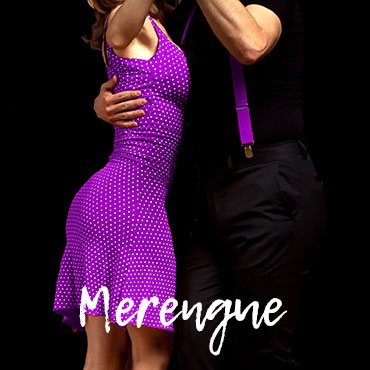The History Behind the Merengue
Merengue is the national dance of the Dominican Republic and has its roots in the 19th century. While its exact origins are debated, it’s widely believed to have developed from a blend of African and European musical and dance traditions. Originally a rural folk dance, Merengue gained popularity across Latin America and later the world, thanks to its infectious rhythm and approachable style. Over time, it evolved into both a social dance and a competitive ballroom style, celebrated for its high energy and vibrant cultural flair.
Merengue Music
Merengue music is known for its upbeat tempo, strong percussion, and lively rhythm. Typically written in 2/4 time, the music features a driving beat created by instruments such as the tambora (drum), güira (scraper), accordion, and saxophone. Its steady pulse and repetitive rhythm make it easy to follow, which is one reason it’s considered one of the most accessible Latin dances for beginners.
Characteristics of Merengue
Merengue is a fast-paced, fun, and rhythmic dance that emphasizes hip movement and a marching-style step. Dancers move in small, controlled steps while maintaining a close connection with their partner. The dance allows for creative arm styling, turns, and wraps, making it visually engaging. Merengue is typically danced with a consistent, grounded rhythm, and the focus is on fluid movement rather than intricate footwork.
Teaching Elements & Basics of Merengue
- Basic marching step: step-tap rhythm with equal weight shifts
- Emphasis on hip motion created by bending and straightening the knees
- Close partner connection and clear lead-follow techniques
- Introduction to turns, arm loops, and wrap patterns
- Focus on timing, rhythm, and musicality
- Easy-to-learn structure, ideal for beginners and social dancers
What Are You Waiting For?
Start Dancing Today!
Bolero songs and artists include:
- Suavemente – Elvis Crespo
- Abusadora – Wilfrido Vargas
- El Tiburón – Proyecto Uno
- La Vaca – Mala Fe


